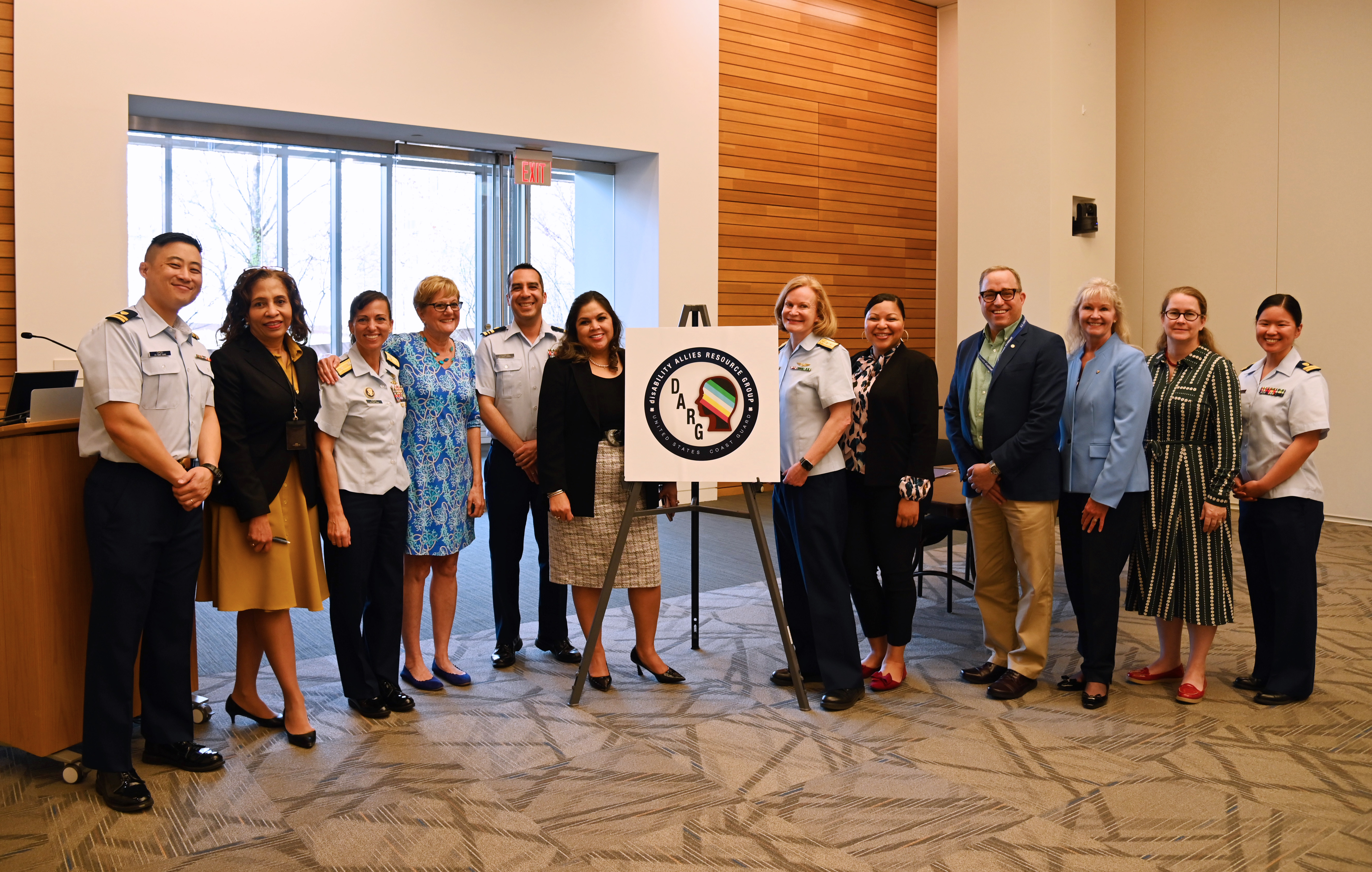The Coast Guard recognizes National Disability Employment Awareness (NDEAM) Month each October. This period serves as a reminder of the importance of creating inclusive work environments where all employees are valued and have equal opportunities to succeed.
Throughout history, the pursuit of equity and access for individuals with disabilities has not been easy. However, the resilience and determination of the disability community and their allies have shaped significant milestones and legislative changes for disability rights and inclusive hiring practices. This timeline traces disability rights progress and sheds light on key moments in history that have shaped the Nation and paved the way for greater opportunities for people with disabilities.
1940s
1940- Paul A. Strachon founds the American Federation of the Physically Handicapped, the first national organization advocating an end to disability job discrimination.
1945- President Harry S. Truman approves a Congressional resolution declaring the first week in October “National Employ the Physically Handicapped Week.”

1950s
1950- Mary Switzer becomes Director of the U.S. Office of Vocational Rehabilitation and champions disability independence for improved quality of life.
1954- The Brown v. Board of Education ruling to desegregate schools laid the foundation for future laws requiring access to education for students with disabilities.

1958- President Truman appoints Howard Rusk to lead the National Security Resources Board’s Health Resources Advisory Committee, which advocates for employing people with disabilities to assist at home in the war effort.
1960s
1961- The American Standards Association publishes the first accessibility standard titled “Making Buildings Accessible to and Usable by the Physically Handicapped.”
1962- The word “physically” is removed from “National Employ the Physically Handicapped Week,” to include individuals with all disabilities.
1963- President Kennedy signs the Community Mental Health Act into law, changing the delivery of mental health services for people in the United States.

1964- The Civil Rights Act of 1964 is passed but does not make provisions for people with disabilities who are still denied access to employment and are discriminated against based on disability.
1968- The Architectural Barriers Act mandates that all buildings designed, constructed, altered, or leased with federal funds be made accessible.
1970s
1973- The Rehabilitation Act of 1973 marks the inception of civil rights for Americans with disabilities, banning discrimination in federal funding recipients’ programs and activities. The law also creates the Architectural and Transportation Barriers Compliance Board to develop and enforce accessibility standards to federal and federally leased buildings and facilities.
1977- Individuals with disabilities stage sit-ins at federal buildings, demanding civil rights recognition and Section 504 enforcement under the Rehabilitation Act of 1973.

1978- The Department of Education establishes The National Council on Disability to ensure equal opportunities in education for all people with disabilities.
1980s
1982- Alan A. Reich founds the National Organization on Disability to expand the participation and contribution of Americans with disabilities in all aspects of life and to close the participation gap.
1983- The National Council on the Handicapped issues a call for Congress to “act forthwith to include persons with disabilities in the Civil Rights Act of 1964 and other civil and voting rights legislation and regulations.”
1988- Congress expands “National Employ the Physically Handicapped Week,” to a month and changes the name to "National Disability Employment Awareness Month."
1990s
1990- President George H.W. Bush signs the Americans with Disabilities Act which guarantees Americans with disabilities unrestricted access to public buildings, equal opportunity in employment, and equal access to government services and employment opportunities.

1996- The Federal Telecommunications Act requires computers, telephones, closed captioning and many other telecommunication devices and equipment be made accessible.
1998- Section 508 of the Rehabilitation Act is amended and requires federal agencies to provide individuals with disabilities access to electronic information and data comparable to those who do not have disabilities.
1999- The Olmstead v. Lois Curtis and Elaine Wilson case mandates that states offer services in the most integrated settings and upholds the rights of people with disabilities to reside in their communities.
2000s
2000- President Clinton passes Executive Order 13163 to promote an increase in the opportunities for people with disabilities to be employed at all levels and occupations of the federal government.
2001- The Department of Labor establishes the Office of Disability Employment Policy to increase the number and quality of employment opportunities for people with disabilities.
2004- The Assistive Technology Act of 2004 maximizes the ability of people with disabilities to select, obtain, and use assistive technology.

2008- President George W. Bush signs the Americans with Disabilities Act Amendments Act, emphasizing that the definition of disability should be construed in favor of broad coverage of individuals to the maximum extent permitted by the terms of the ADA.
2010s
2010- President Obama signs Executive Order 13548 which commits the federal government to become a model employer for persons with disabilities and for departments to create plans to improve processes for the recruitment and hiring of qualified individuals with disabilities.

2013- Section 503 of the Rehabilitation Act is updated and prohibits federal contractors and subcontractors from discriminating against qualified applicants and employees.
2014- The Workforce Innovation and Opportunities Act of 2014 establishes a clear national priority for the employment of people with disabilities.
2017- Section 501 of the Rehabilitation Act is amended to add federal agency hiring goals and requires personal assistance services, if needed, for employees with targeted disabilities.
2020s
2020- 30-year anniversary of the Americans with Disabilities Act.
2023- The Coast Guard and the disAbility Allies Resource Group sign a formal Memorandum of Understanding making the DARG an official Coast Guard Affinity Group. The DARG seeks to raise awareness about workplace issues affecting individuals with disabilities and reinforce inclusive hiring efforts throughout the Service.

2023- Marks the 50th anniversary of the passage of the Rehabilitation Act of 1973, the first federal legislation to address access and equity for people with disabilities.
For more information about NDEAM and to learn how you can help raise awareness, visit the Department of Labor’s NDEAM website: https://www.dol.gov/agencies/odep/initiatives/ndeam.
For more information about the Coast Guard’s DARG, contact Linda Aase, President, at linda.r.aase@uscg.mil or Lt. Cmdr. Vincent Escobedo at vincent.e.escobedo@uscg.mil.